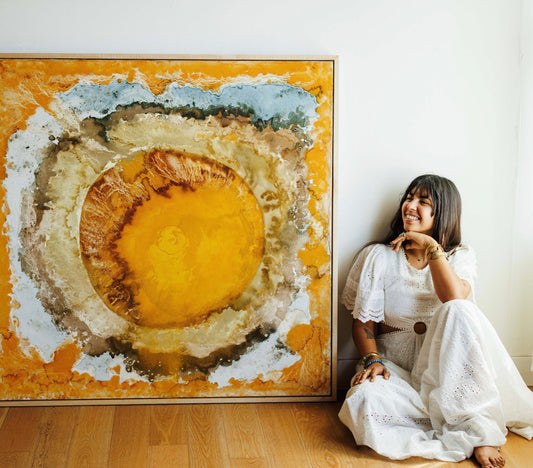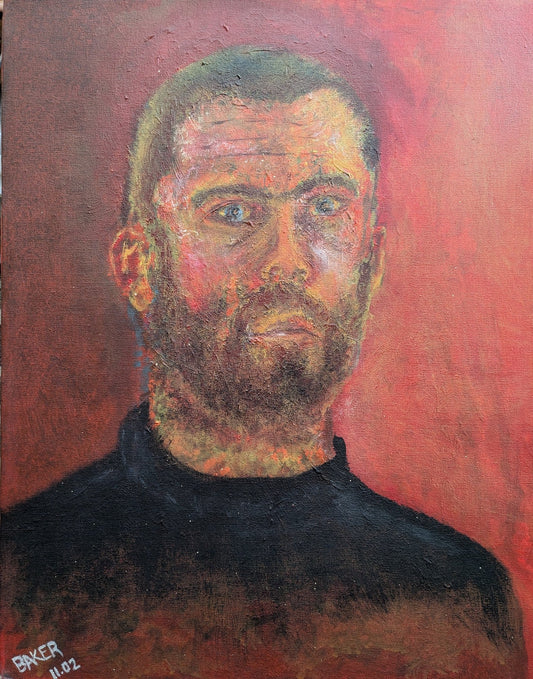Dori Deng is a light sculptor based in Somerset, England. Her work in architecture, space, and geometrics explores the relationships between light, space and time. Deng described her life as being in halves. Firstly, she grew up in Guangzhou, south China, where she lived among the hustle and bustle of the country’s heart of manufacturing. At the same time, she grew up during the 80s, one of the fastest-growing periods in China’s history. It was also during this time she began learning to play the violin at just three years old.
“I was lucky to witness this unique history and be part of the prosperity. Seeing how the fast pace of growth, extremely high productivity, and that openness to possibilities through my own lens as a child, it has certainly formed the undertone to my art practice—hence I make system and order from chaos,” Deng said.


The other half of her life she spent in England, where the communities are less dense, and the weather is colder. While music was her first creative language, she loved exploring and observing inspiration. There was no defining moment, rather artistry permeated her life from the beginning. Her creativity exists in a state of observation and response, allowing that ebb and flow to shape her product.
She worked for a decade within the theatre space because it is the ideal space for her to experiment with wild imagination. By beginning her professional art practice with this level of technical experience, she had the foundations of understanding the scale and physicality of light as a medium.
“I was really lucky to work in the niche field of projection in modern opera. As a young artist working with light and space, those 10 years of experience were super valuable for me in terms of experimenting with hi-tech, large-scale projectors,” Deng said.
She does not use light as a subject or an object in her installations. Rather, light is her medium. She connects it to the sciences; we see the world in light and color, but we also use it as a quantifiable metric to measure distance in space. In history, our ancestors used sundials to measure time throughout the day.
Such an abstract medium can be quite tricky to control, however, especially when working on smaller scales. Whereas other media, such as acrylic and watercolor that only tend to flow where intentionally placed, light is a constant, making it more difficult to manipulate in smaller spaces.

“What I am doing is almost like trying to build the experience of viewing sunset within a square meter!” Dori said.
Her light installations in the recent years have decreased with the usage of colours. Colour functioned in Dori’s early performance works as an indicator or counterpoint for the performer and dancers. As she persisted in her career, Dori found the incorporation of color to be less necessary. She relied less and less on artificial lighting that worked against natural lighting and instead challenged herself to co-exist with daylight in her installations. After all, the most constant light source in human history has been the sun! For this shift, she points toward her Expansion Series, where the major players in each work are steel, glass, and white light. In each piece, the sculptures can exist with our without artificial lighting and still hold their original purpose. She extends the analysis of this purpose to the viewer, who may be looking upon an installation at any given the time of day. The artwork also has its own life ritual and pace of existence.


“It is a significant step forward for me,” Deng said. “The approach has shifted from “trying to say something” into “let it grow and speak of itself.”
The drawing phase is crucial to make Deng’s work a reality. Since she started her with contemporary dancers to achieve moving projections, she began by sketching her ideas in notations as a more direct approach in documenting the relationship of movement between the dancers and the projections. As time progressed, she found herself shifting toward using isometric paper to record her vision better. However, she finds the drawing process to be freeing since the sketches only take up the paper it exists on.
“For me, it is a liberated feeling to draw, I’ve realized the work existing as drawing on paper is also a form of existence!” Deng said.
When actualizing her sculptures, scale plays an important role when proportioning the final piece. She starts with a specific shape and builds a gradually complex relationship between the structures and the light cast onto them. This process of expansion allows her vision to develop from the sketch while also leaving room for experimentation.
©ArtRKL™️ LLC 2021-2023. All rights reserved. This material may not be published, broadcast, rewritten or redistributed. ArtRKL™️ and its underscore design indicate trademarks of ArtRKL™️ LLC and its subsidiaries.





